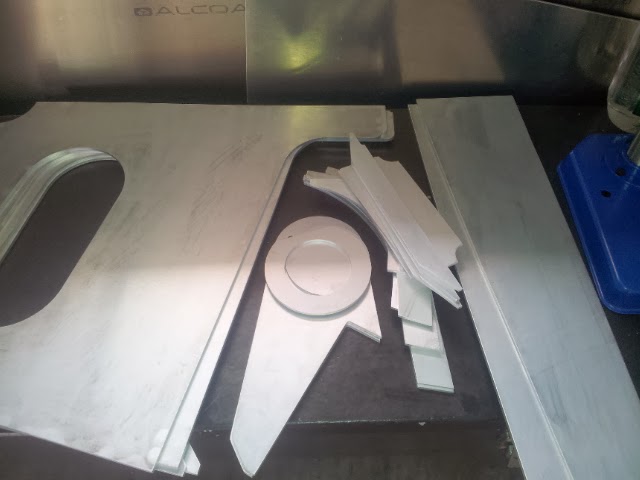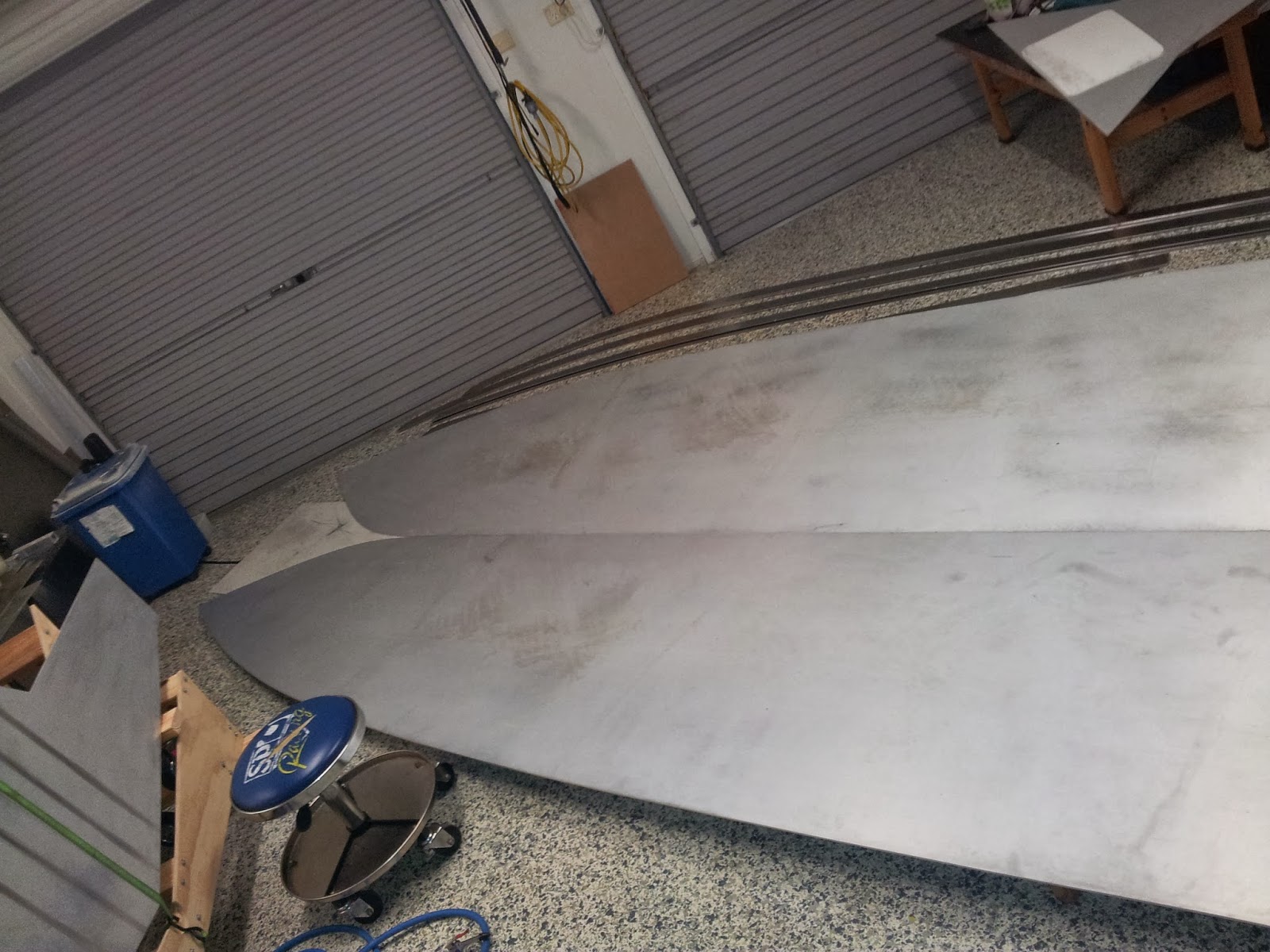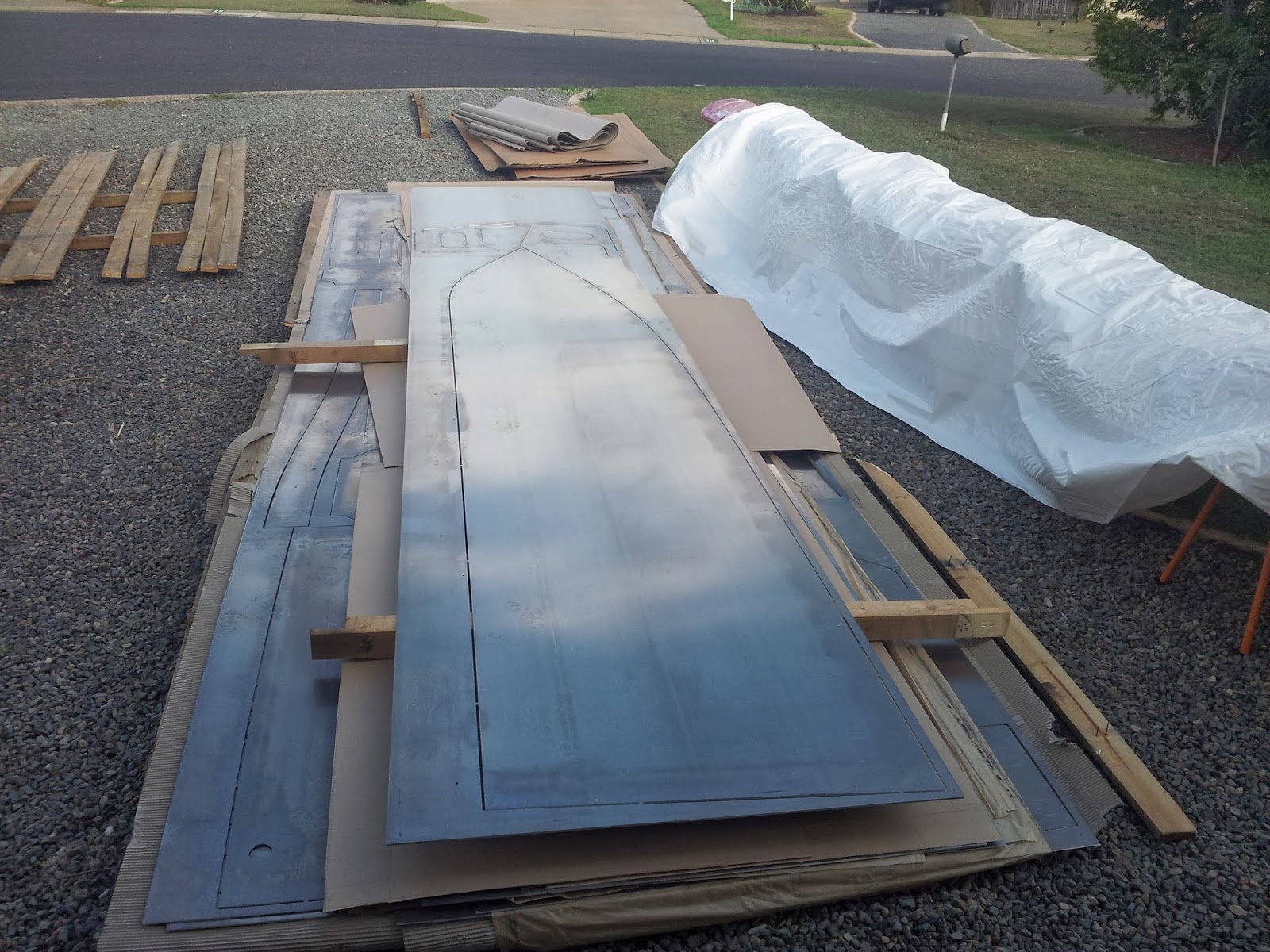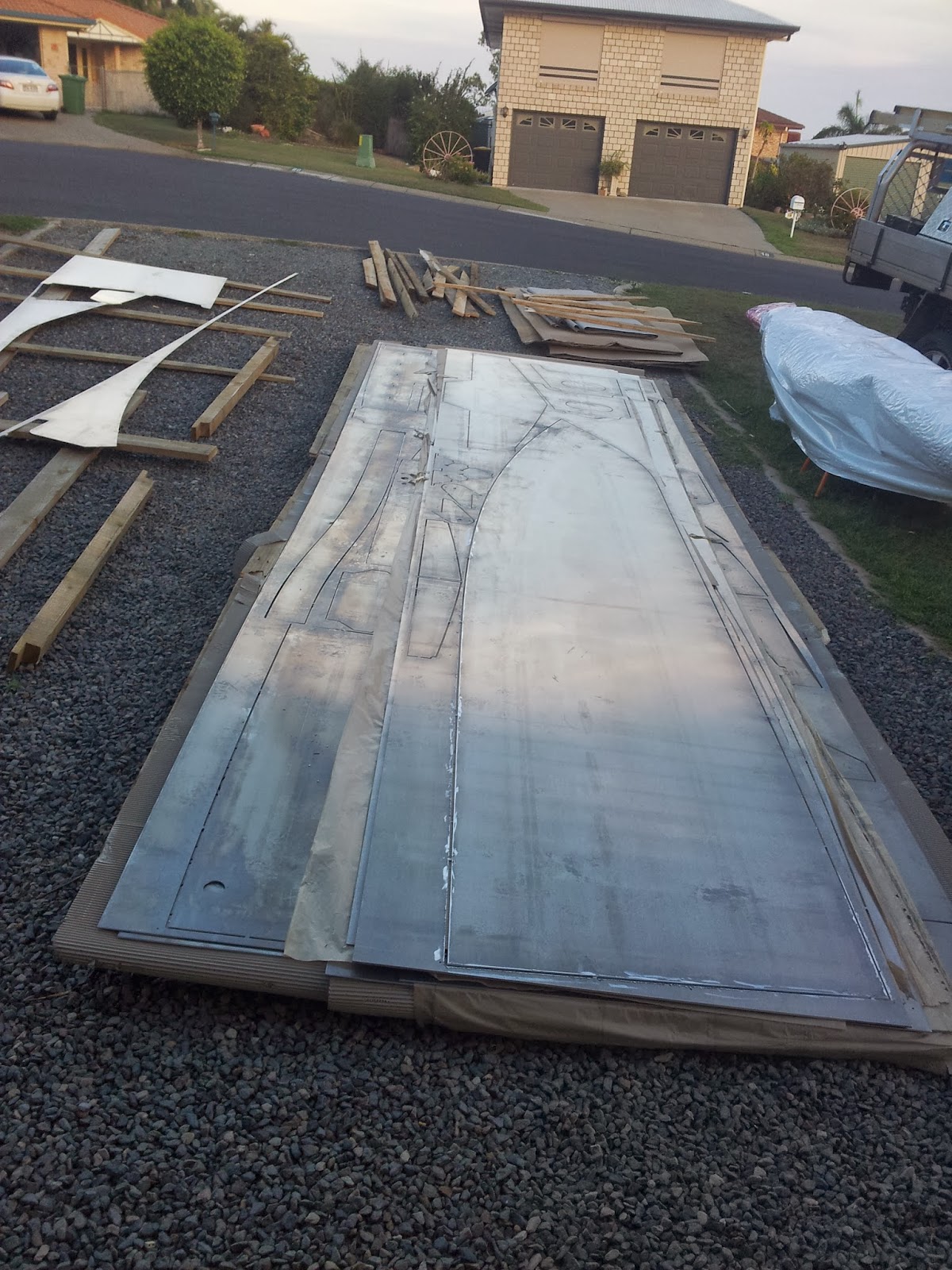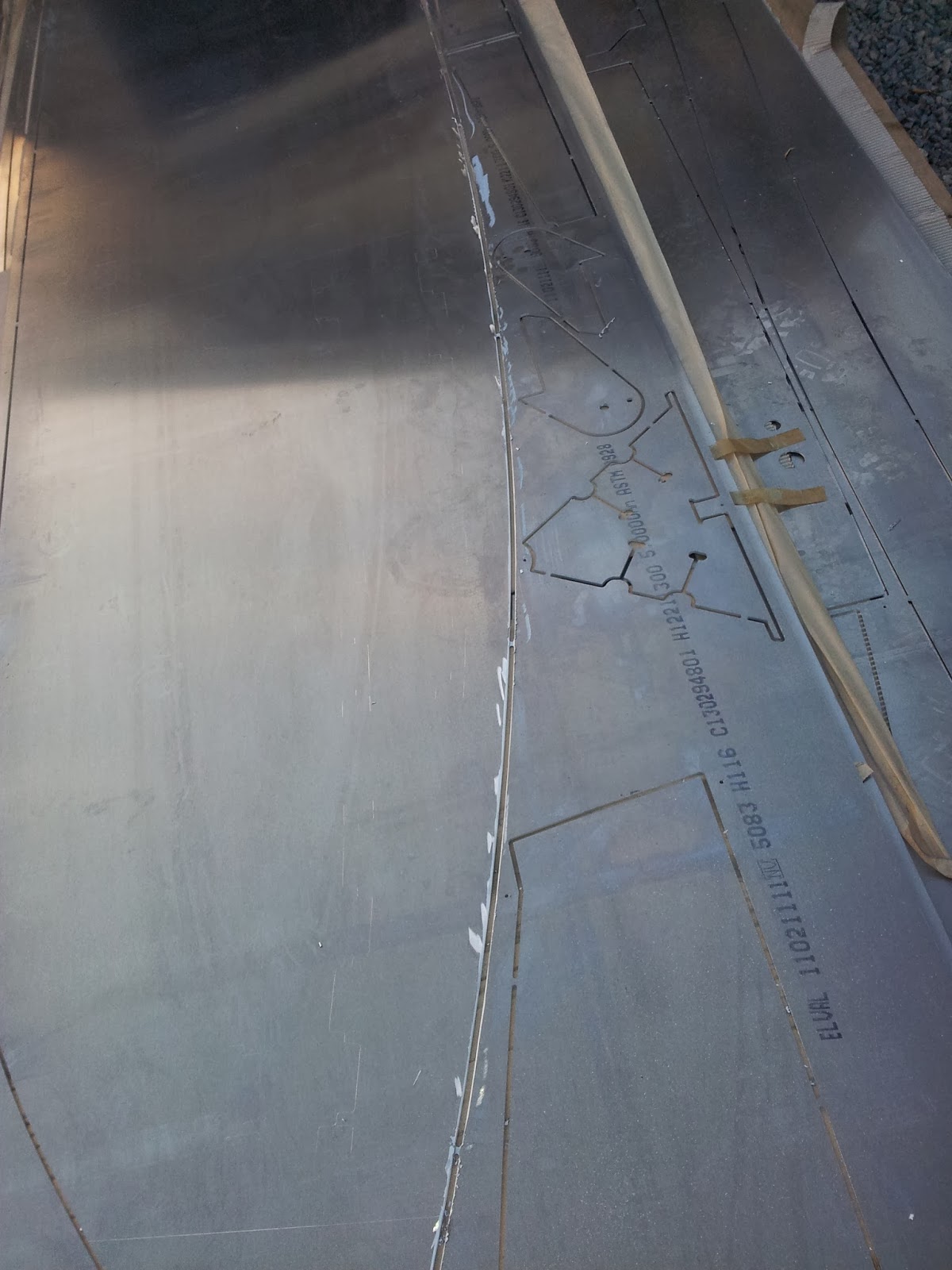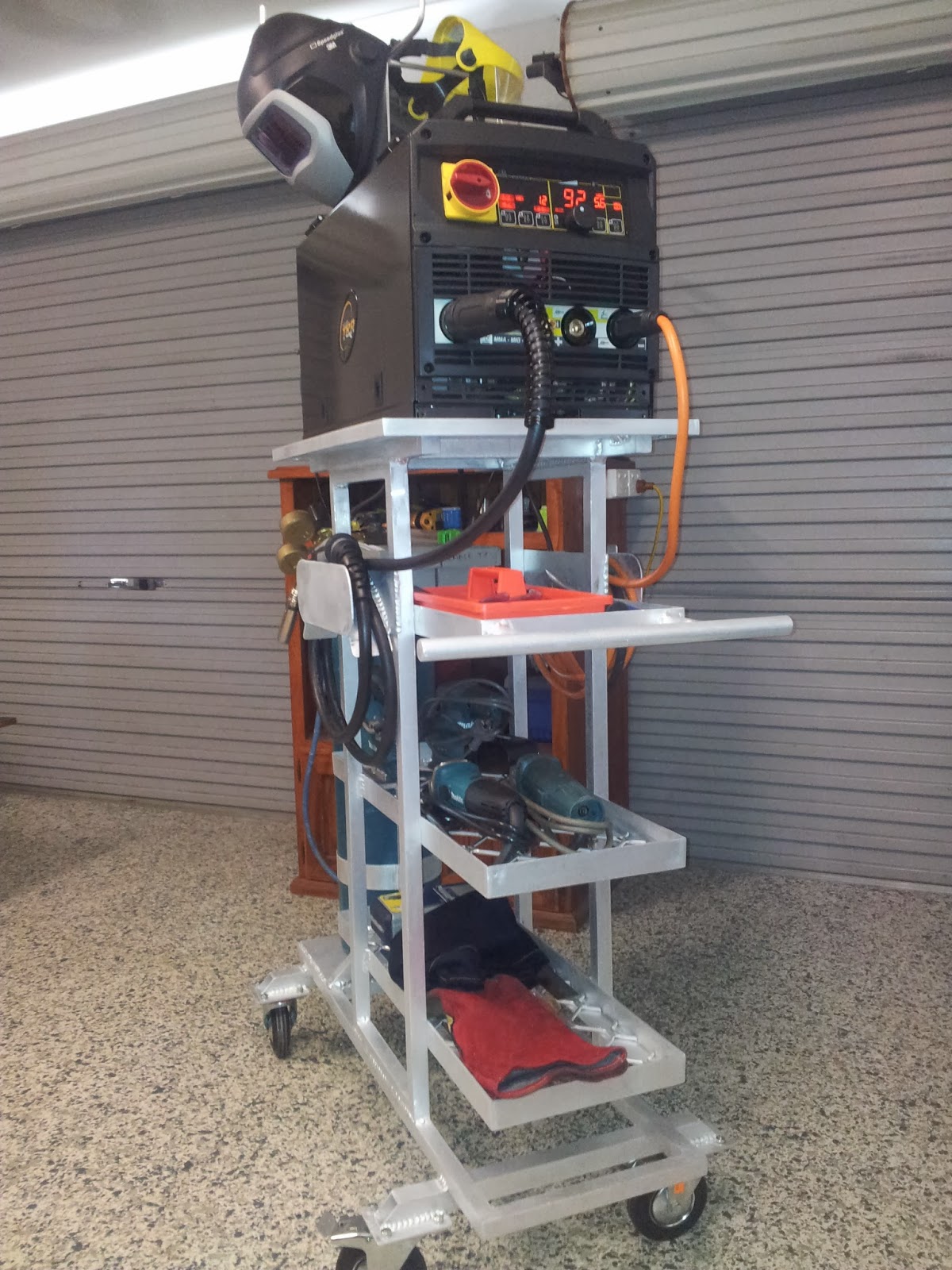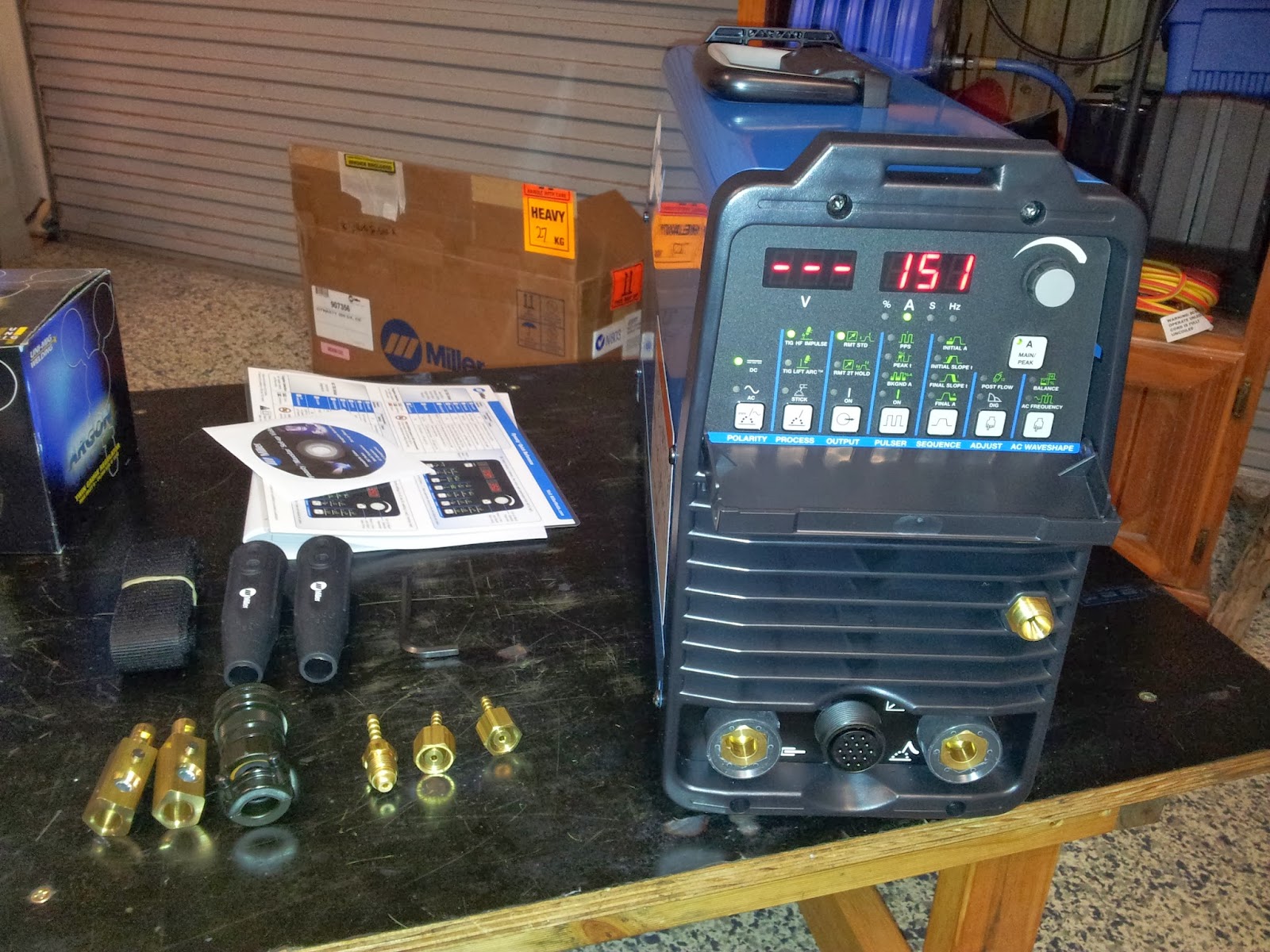Etching the parts with Ali Brite to remove the layer of mill scale.
The extra amount of work to do this was worth it in my opinion. I found the metal much better to work with in terms of welding and prep.
Here's a blurb of what I found on the net.
Mill scale or mill finish either term can be used to describe the coating that comes from the mill on aluminum sheet. Its shiny and is not (chemically the same as) the aluminum and if not removed will cause (facilitate/participate/enable/interact) corrosion of the underlying aluminum.
Look up "galvanic differential" or galvanic corrosion, then the idea will be more clear. There is a slight galvanic difference between the alloy under the mill scale/finish and the parent/native/final/underlying metal.
Next look up poultice corrosion, this is also facilitated/enabled/created/assisted by the mill scale/finish on marine aluminum alloy sheets/plates. This is where water is kept in contact with the sheet in a tight space and the oxygen goes out of the water so it becomes acidic and then speeds the surface corrosion using the scale/finish to enable the water retention and the reaction. Similar 'cells' in descaled panels show almost no trace of the level of corrosion.
Many boat builders and manufacturers leave the scale on and their boats show the results in a year or two, while 30 year old boats that have been descaled/etched to remove the finish/scale are clean.
This layer also retains atmospheric moisture (dew, condensation, humidity) so much it has to be removed to weld or the weld will have so many porosity gas bubbles it will be structurally unsound. [Many 'sound' MIG welds have some root porosity] However, since this is only needed in the weld zones, and is not always done there either, the remaining surface may or may not have this 'finish' removed, but it is best practice to remove this manufacturing byproduct, just like it is in steel sheet plate, prior to painting, or even if the boat will remain bare metal finish.
Look up "galvanic differential" or galvanic corrosion, then the idea will be more clear. There is a slight galvanic difference between the alloy under the mill scale/finish and the parent/native/final/underlying metal.
Next look up poultice corrosion, this is also facilitated/enabled/created/assisted by the mill scale/finish on marine aluminum alloy sheets/plates. This is where water is kept in contact with the sheet in a tight space and the oxygen goes out of the water so it becomes acidic and then speeds the surface corrosion using the scale/finish to enable the water retention and the reaction. Similar 'cells' in descaled panels show almost no trace of the level of corrosion.
Many boat builders and manufacturers leave the scale on and their boats show the results in a year or two, while 30 year old boats that have been descaled/etched to remove the finish/scale are clean.
This layer also retains atmospheric moisture (dew, condensation, humidity) so much it has to be removed to weld or the weld will have so many porosity gas bubbles it will be structurally unsound. [Many 'sound' MIG welds have some root porosity] However, since this is only needed in the weld zones, and is not always done there either, the remaining surface may or may not have this 'finish' removed, but it is best practice to remove this manufacturing byproduct, just like it is in steel sheet plate, prior to painting, or even if the boat will remain bare metal finish.



